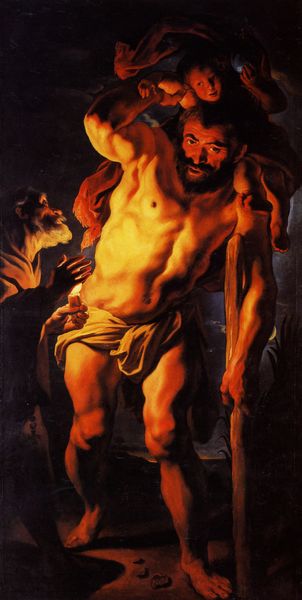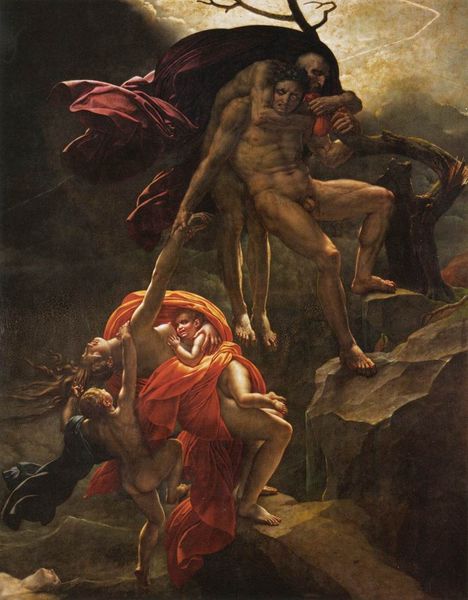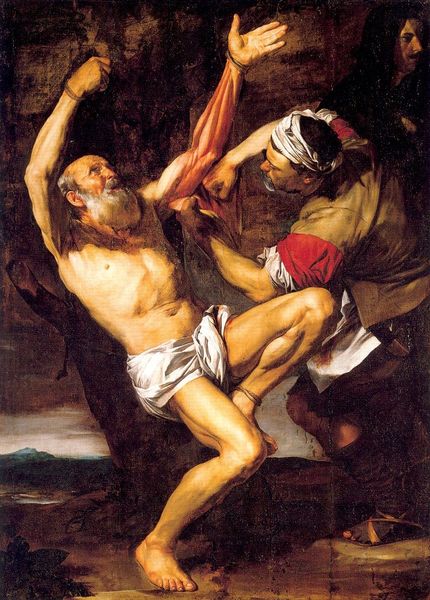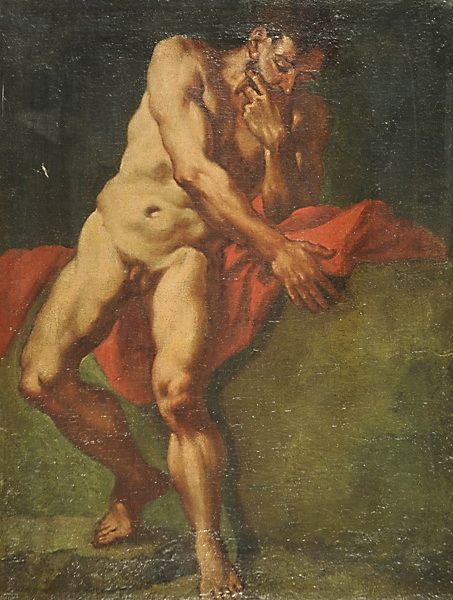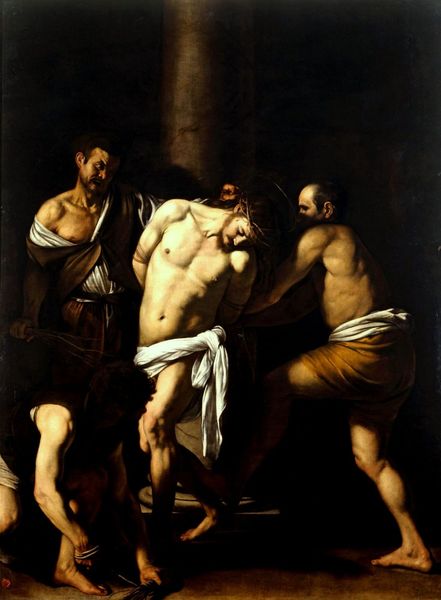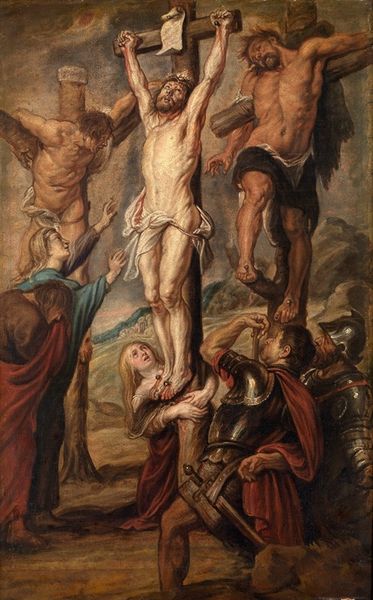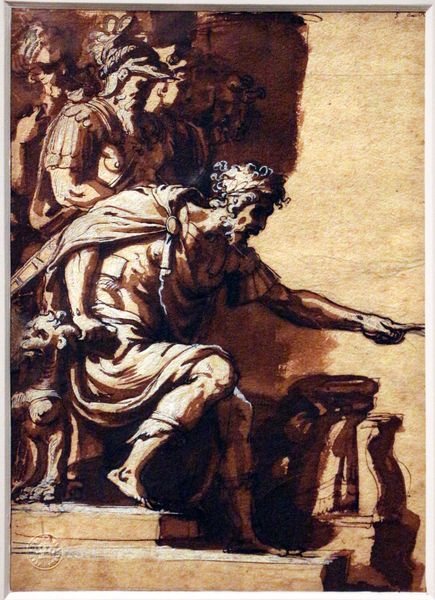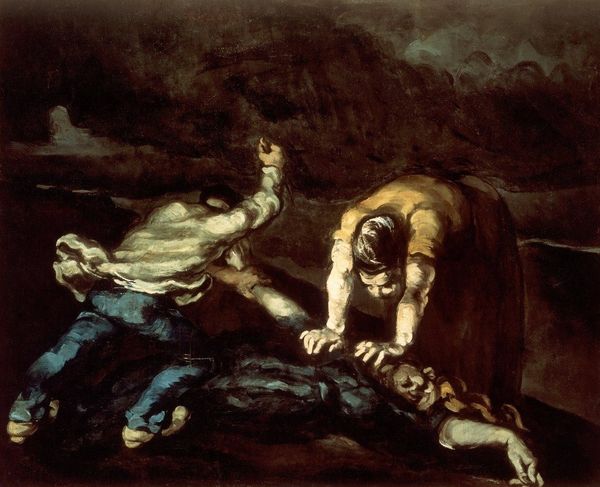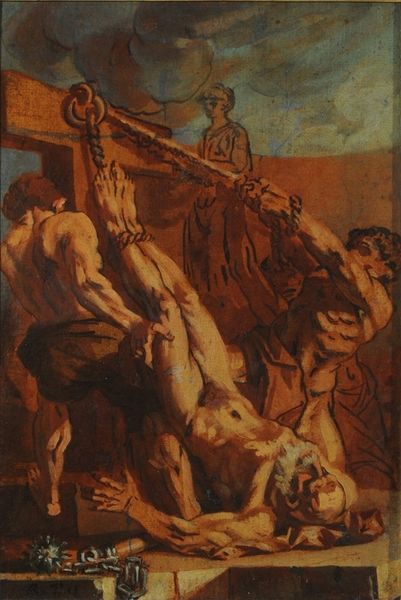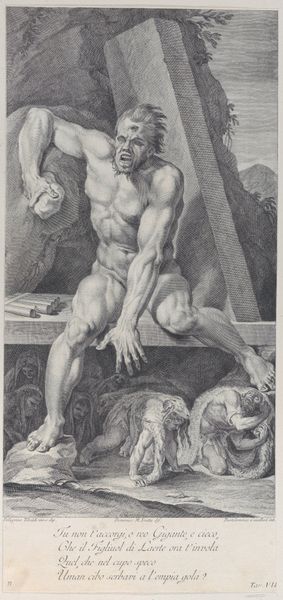
Copyright: Public domain
Editor: This is "Christ in Limbo," an oil painting by Paul Cézanne from 1867. It's quite striking; the figures have a rawness that's almost unsettling. What catches your eye when you look at this piece? Curator: The heavy impasto and the raw, almost violent application of the paint immediately stand out. Cézanne's labor is very present. How does this relate to the narrative being portrayed? Editor: I see what you mean. It does look like it was almost sculpted, not painted. I guess the roughness fits with the subject – the harrowing of hell and release of souls, or ‘limbo.' Curator: Exactly. But consider further; What socio-economic conditions might have allowed Cézanne to work in such a way? Was it a deliberate distancing from the polished academic style that ensured access to official salons and patronage at the time? This work speaks of labor, not only through subject but process. Editor: So, by emphasizing the physical act of painting, he's almost making a statement about artistic freedom and diverging from established tastes? Curator: Precisely. Also consider the materials – oil paint was becoming increasingly industrialized in the mid-19th century. The accessibility of these materials perhaps also enabled the bold approach we see. The availability and form impacts style and its accessibility. What is produced affects what can be represented and made. Editor: That makes perfect sense! I had been focusing on the religious aspect but thinking about the material production adds a completely new layer. Curator: Indeed. This painting, and others like it, is a great example of how understanding material context gives us greater access to its significance. Editor: I will certainly look differently at the paintings after this conversation, thinking not only of their beauty, but also of their making. Thank you!
Comments
No comments
Be the first to comment and join the conversation on the ultimate creative platform.
